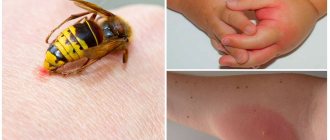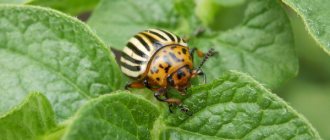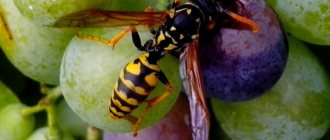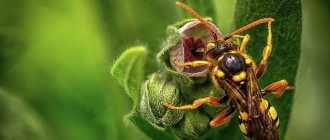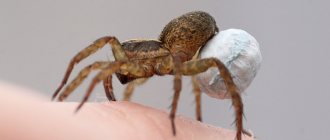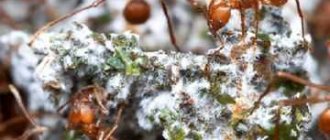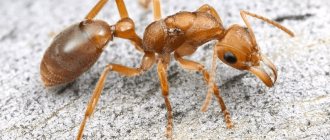Photos of the wasp can be seen in any biology textbook, on Internet sites, and information publications. The common wasp is found everywhere, characterized by a bright striped yellow-black color, small antennae, and long transparent wings. Wild wasps often settle on a person’s dacha plot of land. They build nests in the ground, in trees, under the roof, in attics, and on balconies. However, there is a huge variety of wasps in the world, differing in color, body structure, strength of poison, and behavior.
Origin of the species
Insects have no specific scientific definition. Wasps include all stinging stalked bellies belonging to the order Hymenoptera. These insects are not classified as either ants or bees.
At the moment, there is a wide variety of wasp species. These include: road, sparkles, as well as scolias, paper, hornets and so on. All varieties are conditionally divided into:
- Single insects.
- Social insects.
Interesting fact : bees are able to defend themselves only with a sting, while wasps additionally use a powerful jaw apparatus. When in danger, wasps bite quite painfully.
How is a bee different from a wasp?
- Appearance. The bee has a round body, while the wasp has an elongated body shape.
- The bee has a brighter and more contrasting color, the wasp has a softer and more monotonous color.
- Like a fly, the average wasp is more parasitic and takes away than it gives. The bee, in turn, brings more benefits.
These are not all the differences, but they are the main ones, so distinguishing insects from each other is not difficult.
Description
A wasp builds a nest.
Solitary wasps live separately. They personally build nests of strange shapes. All adult insects can reproduce. Nests are built in secluded corners: in spaces between walls, under roofs, in the soil. Only some species live without building nests. These wasps live in naturally created wood holes.
Social varieties live in large families. The nest is built by the queen, and not every adult insect can reproduce. In some cases, several thousand individuals live in such colonies, and only the queen can reproduce. Infertile wasps are classified as workers, while fertile ones are called queens.
Interesting fact : most Hymenoptera are able to change their lifestyle from solitary to social. This process is carried out in several stages.
Appearance
Wasp with a sting
Wasps are extremely bright insects that attract the eye. They have a characteristic coloring - black and yellow transverse stripes. Adult insects grow up to 10 cm. Some females grow up to 18 cm. Small hairs are located along the body of the animal. The body ends with a sharp sting. The sting is short and smooth, which allows it to easily pierce the body of an enemy. The victims are able to move, so wasps sting in any position.
Wasp eyes
Insects have compound eyes. They are quite large compared to the body and can distinguish objects within a radius of 180 degrees. Three additional eyes are located on the top of the head. However, they are practically invisible to the naked eye. Whiskers are located near the small eyes. Their purpose varies depending on the insect's activity and certain situations. Wasps mainly rely on these antennae during flight. They serve as a guide for determining the direction of the wind, the size of the cracks, etc.
Interesting fact : since wasps have a smooth sting, they do not injure themselves when attacking.
Body structure
The body of a wasp consists of a head, torso, legs and wings.
The eyes have a special structure - they consist of a large number of plates - facets, this makes it possible to see simultaneously in all directions. The eyes are bulging and protrude above the head.
But besides these eyes, wasps have three more eyes, located at the top of their heads. It’s hard to believe that a wasp is so big-eyed, but you can easily be convinced of this by examining the wasp’s head in a close-up photo.
The wasp’s antennae are also a device for measuring cells when building a nest.Multifunctional antennae grow on the head - they are needed for smell and touch, the wasp uses them to detect air movement, and they also work as taste buds.
Only females have a sting - in females it plays the role of an ovipositor, and in case of danger, the insect uses it as a weapon - releasing poison through it into the body of its enemy.
Peculiarities
The name insects is a collective name for many species. The external characteristics of many wasp species differ significantly. The most common are: Paper wasps. The most familiar to people. They live near humans, standard black and yellow color. Sparkles. The wasps are medium-sized, growing up to 8 cm, and also have a standard color. Floral. These insects are extremely small. They do not grow larger than a centimeter. The color is standard with a predominance of yellow. German women. Insects with a specific color. Their body color is bright orange. Such wasps immediately catch the eye. Males are black and orange in color with black wings. Females are wingless, which is why they received the nickname velvet ants.
Habitat – where do wasps live?
Habitat of the common
wasp Animals can be found all over the planet. These insects have settled across all continents. They are available in all CIS countries, Europe, Africa, Asia and America. Insects cannot be found only in the vast expanses of the Sahara, in the Arctic, and also in the Arabian Peninsula. Insects like to settle in temperate climates. Hot and frosty regions do not allow wasps to survive.
Interesting fact : in the territory of the People's Republic of China and Japan there is an extremely dangerous species of these insects. Asian hornets grow up to 6 cm and can kill an adult with one bite. They are especially dangerous for allergy sufferers. Every year in these countries, up to 50 people die after being stung by this hornet.
Most insects are found in the northern hemisphere of the planet. Some are found in Brazil. Insects choose housing based on criteria: the presence of plants where they can hide, people and a temperate climate. Living near people allows wasps to get food faster. You can live in trees and build nests from wood. Some species build nests from clay or small stones. Externally, these houses look like small castles.
Interesting: Why does smoke “calm” bees?
A hornet's nest is poisoning your life - what to do?
A separate problem is a wasp’s nest somewhere near the house or even on the balcony. In this case, the danger of being stung increases significantly. How to deal with wasps and drive them out?
If the nest is nearby and you can reach it, you can soak a cotton swab with any insecticide and put it in a bag, covering the structure with it. You need to wait a little until the insects die. You can find many products on sale today to combat wasps, and the instructions will tell you how long it takes for the drug to take effect.
Another way is to burn the nest. Safer methods are to pour boiling water over it or cover the entrance with any soft material to block the access of oxygen. Do not forget to wear tight and closed clothing before doing this. A beekeeper's outfit would be optimal.
If the nest is far away, you can try to inject a poisonous agent into it using a syringe. And to prevent the wasps from returning to their habitat, it is better to treat the area where the nest was located with hydrogen peroxide or a solution of potassium permanganate.
It is quite possible to fight wasps. Be careful and the insects won't bother you!
What does it eat?
Wasps eat
Wasps have a varied diet, depending on several factors: the type of insect, what stage of development it is at and where it lives. People think that wasps don't care what they eat, but in reality this is not the case. Insects feed on meat, fish, berries or sweets. However, these products do not constitute the main diet of insects.
Wasps love soft but liquid food . They eat fruit pulp, drink plant sap, eat berries and drink flower nectar. If possible, wasps may eat human food. Insects search for food thanks to their developed sense of smell. They can easily detect slightly rotten or fermented fruits. Animals also love beer or kvass. Some of the wasp's food is taken to the larvae or queen. Such work falls on the shoulders of working individuals.
Wasp on the hunt
Predatory wasps feed differently. They rarely drink nectar, and most of the time they hunt for other insects. They can even kill small spiders. They feed the larvae with insects. The pre-predatory wasp stalks the potential victim, after which it attacks it with its stinger, paralyzing it. The poison helps keep the victim fresh.
Features of character and lifestyle
The ownership of an animal greatly changes its lifestyle. Solitary wasps live a monotonous life, actively engaged in providing supplies for the larvae. Their nests have separate compartments for prey, where it is stored for feeding the offspring. Subsequently, the larvae develop independently.
Wasp nest
Social wasps lead more eventful lives. In the spring, the queen finds a place where she creates a house. She lays eggs in the nest, and then takes care of the emerging larvae. With the first brood, the queen gets rid of her worries. The nest is now tended by worker wasps. They build the nest further and get food. The queen, in turn, continues to leave offspring.
OS work at night
Some people believe that wasps and bees sleep at night. However, in reality everything is completely different. Insects only need a few minutes a day to rest. They never sleep at night. The nests are constantly busy. The wasps gradually chew the bark, and in the morning they build new honeycombs with the resulting material.
Interesting fact : males do not live more than two weeks. Most often they die some time after mating with the queen.
Most representatives of wasps have a bad character. They will never attack first, but will sting at the slightest disturbance. The smell of wasp poison is sensed by relatives, so it is best for the victim to move away from the nest before an entire colony attacks it. The wasps unite and jointly confront their enemies.
Lifestyle and habitat
Wasps can be found almost everywhere, in almost every corner of the planet, with the exception of areas that are particularly unsuitable for life. They prefer to settle close to humans, because in the immediate vicinity of people and their homes there is always something to eat.
Now it's time to talk more about the social structure inherent in paper wasps. It is these representatives of the diversity of species already described that should be given special attention, because when they talk about wasps, they usually mean wild social wasps. Although this is not entirely correct.
The groups in which these insects gather to live together are close-knit families called colonies. They can have up to 20 thousand members. In such families there is a clearly established social structure and division into castes with a certain range of responsibilities.
The uterus is engaged in breeding offspring. Worker wasps look after the larvae, feed the rest of the family and guard the common home. The queen builds a nest out of a paper-like material.
It is produced naturally by wasps themselves, by grinding wood and mixing the material with their own saliva. Powerful jaws help these creatures build nests.
With these, the queen is capable of finely grinding hard wood. Worker wasps and drones are on average about 18 mm in size, but the queen of these insects is slightly larger. Males and females are approximately the same color, but females have a slightly larger abdomen. Single wasps may not build nests, but use burrows made by other insects and small rodents.
Social structure
In winter, wasps hibernate under tree bark, fallen leaves, and in their nests. The nests are located in secluded corners. In the spring, the queens fly out and look for a new place to build nests. Nests are needed so that the wasp can reproduce and increase the size of the colony. Tree bark, small pebbles and other natural building materials are used in the construction of nests.
Interesting: Enemies of bees - list, description, photos and videos
The first offspring are sterile individuals. They subsequently continue building the nest and provide food for the queen, caring for the offspring. At the end of summer, the queen produces a new brood, which is also capable of breeding. Once the females have been fertilized, they look for a place to spend the winter. Males die quickly.
Ground wasp
Most predatory wasps live in the ground. Only a few do not rebuild their nests at all, settling in natural openings. Single individuals prefer to lay eggs in separate cells, which is not typical for social ones. There is no connection between the larvae and adult insects of solitary wasps. Once clogged, the larvae survive on their own. A remarkable fact is that the male larvae are placed in smaller cells. From this we can conclude that males are smaller than females.
Solitary individuals build more interesting nests than social ones. These include: Burrowing wasps, otherwise called Sphecidae. They build nests in protected corners. These are mainly places on the side of the house walls. Flower wasps, otherwise called Masarinae, build their homes in exactly the same way.
Where are wasps found?
Species of wasps that live in families build nests consisting of individual elements called honeycombs. Insects build their nests not far from places where there is a lot of building material and food. Often, abandoned nests, rodent holes, tree hollows, etc. serve as such places for this. It is not so rare for wasps to appear on garden plots or summer cottages, in various outbuildings, in the attics of houses, on balconies, etc. Here they live and raise their offspring throughout the summer, and with the arrival of autumn they leave the nest. Only young, fertilized females survive and find refuge in various places.
Solitary wasps are found exclusively among wildlife. At night, they can be on the stems of various plants, holding onto them with their paws and jaws. They can climb into a flower. These insects behave like nomads, constantly changing their location.
Reproduction
Stages of wasp reproduction
In winter, adult individuals constantly hide in shelters. For this purpose, they first look for secluded corners. In the spring, the queen looks for a place and builds a nest. After the first brood, the queen stops building a house on her own. This task falls entirely on the working OSes.
Fertile wasps are born in late summer. Fertilized females hide in shelters for the winter, and males die after mating games. One queen produces up to 2 thousand insects, most of which cannot reproduce.
Stages of paper wasp development
The queen seals the eggs in a special chamber, where they are kept along with the insects placed there. The larvae feed on insects, developing into full-fledged individuals. Those larvae that can reproduce further feed differently. Their diet consists of food that promotes the development of the genital organs.
Lifespan
Life expectancy differs among different species and sexes. The male wasp performs the functions of a fertilizing male. Soon after mating it dies. On average, a male wasp lives 14 days.
Fertile females are called queens. Social queens lay the foundation of a future nest, choose a suitable place, and are exclusively engaged in the reproduction of offspring. The queen of ordinary wasps lives for a year. Dies with the onset of persistent cold weather. Young fertilized females overwinter in the wood and become more active in the spring. Representatives of other species in countries with warm climates can live for several years.
On a note!
The majority of the social wasp hive is made up of females who are not ready to mate—working individuals. They perform various functions such as building a nest, searching for food, feeding larvae, protecting the hive, etc. The working individual lives from 1 to 2 months.
Kinds
Zoologists count a lot of varieties of wasps. The main differences are sizes, patterns and colors. The pattern on the body is often clear, but has a different shape. Common wasps have anchor-like patterns.
Paper wasps
A young female paper wasp, Polistes dominula, begins a new colony.
Paper wasps are a group of insects that include several subfamilies. About sixty species can be found in central Europe alone. It is a social variety with a cohesive social structure.
Hornet
Hornet
A large genus from the group of paper wasps are hornets. These are the largest representatives of wasps, growing up to 5.5 cm. They are found mainly in the northern hemisphere, considered a rare species. The hornet is a fairly large representative of wasps with extremely caustic poison. Hornet stings are painful and can lead to disastrous consequences for humans.
Solitary wasps
Flower wasp
Solitary wasps are a whole group of insects that live separately from others. These include many types of wasps. For example, the flower wasp. These are extremely small wasps, no more than a centimeter in size. They feed on pollen and nectar. Nests are made from clay mixed with sand and saliva.
Interesting fact : like bees, wasps have a good sense of smell. They can smell the poison of their relatives and attack in a swarm.
Sand wasps
Sand wasp with prey
Sand wasps, numbering over 8 thousand species. They can be small - up to 0.5 cm or large - up to 2 cm. The species can be found in tropical countries. These wasps are predatory and live underground, where they build nests. Mostly black and yellow in color.
Interesting fact : paper wasps living near humans live in swarms. They distinguish each relative by remembering their faces.
Black wasps
Black wasps
Black wasps are also classified as sand wasps. They are medium or large. Extremely poisonous, they live in tropical countries. Sometimes found in northern regions.
White and red wasps
White and red wasps are also extremely poisonous. They can kill a person with one bite.
Wasp sting and its possible consequences
A wasp sting is considered the second most painful among insect bites in general. The only thing that can bite even more painfully is the South American bullet ant. However, in our latitudes, the wasp is the most aggressive insect, an encounter with which can lead to unpredictable consequences. Feeling a threat, the wasp violently attacks the enemy and is capable of biting several times in a row - as long as the reserves of poison last. This explosive mixture can be enough for 5-6 bites.
Wasp venom is a complex and dangerous cocktail of a large number of different substances:
- phospholipases – cause destruction of cell walls, tumor and inflammation;
- melitin – destroys mast cells;
- apamin is a toxin that has a strong effect on the motor nerves and the entire nervous system as a whole;
- acetylcholine – negatively affects the conduction of nerve impulses;
- histamine – triggers allergic reactions in the body;
- MCD-peptide – promotes an avalanche-like increase in the amount of histamine in the blood;
Moreover, in different representatives of even the same species, the ratio of the components of the poison is extremely individual, and therefore the reaction to a bite cannot be the same. And if we also take into account the individual characteristics of the body of the bite victim, then no one can accurately predict the consequences of the attack.
Natural enemies of wasps
Social wasp species live in large families. Together they defend the house from enemy attacks. They can cause the death of a person in a joint attack. Colonies also have their own enemies.
European or common honey beetle
Some birds dare to attack wasps. European buzzards dare to attack wasps during flight. They quickly tear off their stings and eat insects. They also feed the wasps to their chicks. Bee-eaters feed on wasps, instantly snatching wasps in flight. They crush insects and then quickly swallow them. Birds do not harm themselves in any way during such a hunt.
Interesting fact : hornets also use powerful jaws during an attack. Several hornets can destroy an entire bee hive, destroying the colony. The powerful jaws of hornets crush the chitin of insects and can even kill a praying mantis.
Bee-eaters, or bee-eaters
Various parasitic insects inhabit entire wasp nests. These include ticks and larvae. Ticks eat young animals, while hiding from adult insects. Thus, the mites manage to greatly reduce the number of insects.
Interesting: Mantis - interesting facts
Wild animals also feed on wasps. The main enemies are hedgehogs, bears and other medium or large predatory animals. At the same time, many predators bitten once by wasps prefer not to attack.
The main enemy is people trying to exterminate wasps in their dachas and within the walls of houses.
Nutrition
Wasps are predators, but they don’t shy away from sweets, on the contrary, they adore them. Almost everyone knows that if you leave a bowl of honey or jam on the open veranda, then after a while you can find a whole flock of feeding wasps near it.
These insects collect flower nectar, but, being predators, they also eat small relatives of other species.
The predatory nature of wasps is also manifested in the fact that in order to provide their larvae with food, they can lay eggs, for example, in a large caterpillar.
The wasp pierces the skin of the caterpillar, using its ovipositor like a scalpel, lays eggs and the larvae, having hatched, begin to eat the body of the victim. Spiders, large beetles, and cicadas become such incubators.
Benefit and status of the species
Wasp
These insects are considered important parts of the fauna. Even though they only harm beekeepers and do not produce honey, they are still beneficial to nature. Wasps kill a lot of agricultural pests. They catch various insects to feed the larvae. Killing pests greatly helps plants. This way parasites do not attack gardens and vegetable gardens.
Wasps allow you to get rid of mole crickets. To this end, people attract earth wasps to flowering plants. Insects quickly eliminate pests, also destroying borers and leaf beetles. Paper, long-nosed and wall wasps feed on these types of insects. Thus, the number of pests is significantly reduced. You don't even have to use chemicals.
Security
Forest wasp
The species is not considered endangered, so it is not in the Red Book. Only a few species are classified as rare in certain areas. For example, the forest wasp is listed in the Red Book of the Moscow Region. This happened due to the fact that wasps of this species are rare in those places. There are not so few insects in the forests.
The main reason for the population decline is human actions. This is considered the main factor, because people destroy wasp nests on their own, considering them pests. From time to time, insects build nests in open areas, so they are damaged due to winds or rains.
The wasp population is declining slightly due to natural enemies. Animals are killed by predators, vermin or birds. At the moment, all habitats of forest wasps are under careful protection by environmentalists. Now it is planned to create new reserves for the protection of insects of this species.
What to do if bitten by a wasp?
Wasps are extremely aggressive when it comes to home security. Social species can attack in entire colonies, killing the enemy. Thus, a person can be seriously injured when approaching a wasp nest. Even one wasp will bring a lot of problems to a person, especially if he is allergic. The insect family attacks with such force that it can kill an adult.
One bite from the creature is extremely painful. Swelling and redness appear at the site where the sting stuck. The pain from the bite of ordinary wasps goes away in half an hour, while especially poisonous species can kill with just one bite. The swelling remains for some time.
At the same time, wasps attack not only people, but also other species of wasps. It was previously said that insects settle near people. In a situation where a person is trying to eat the same food as a wasp, he may not notice the insect sitting on the food. A bite to the tongue or other tissues in the mouth is extremely painful; in dangerous cases, even the respiratory tract is affected. Allergy sufferers are advised to always carry special medications with them when going outdoors.
Ice or a wet towel is applied to the victim's bite site. Plantain or onion juice helps a lot. Plantain leaves are first washed to remove dust, then kneaded and applied to the bite. Compresses should be periodically replaced with new ones. The pain will go away in the shortest possible time along with swelling.
Osa city. Historical walks
Dear readers, I invite you to take a short walk around Osa. A small town with an unusual name is located in the southwest of the Perm region, on the banks of the Votkinsk reservoir on the Kama River. Like ancient Cherdyn, Osa has perfectly preserved the atmosphere of an ancient district town. A walk along its streets will not leave you indifferent.
According to chronicles, Osa appeared back in 1591 under the name of Novo-Nikolskaya Sloboda, and it was founded by the brothers Nechai and Philip Kaluzhenin on the Bashkir lands. Already in 1737, Osa received the status of a city and became the center of the voivodeship. In the 18th century, the Siberian Highway passed through the city, which led to the development of trade. The expedition of Vitus Bering and many other travelers, convicts, and peasants went along this route to the Far East in search of a better life. Quiet and calm Osa in 1774 became the scene of one of the episodes of the Peasant War - the city was taken by the troops of Emelyan Pugachev. In 1781, Osa became a district town of the Perm province. The development of the city continued after 1917: Osa became a regional center, and the first industrial enterprises appeared in the city.
Today the city has a population of 21 thousand. There are mechanical engineering and food industry enterprises, and the oil fields located around Osa are of great economic importance. It is interesting that in Soviet times, underground nuclear explosions were carried out at one of the fields to increase the porosity and permeability of oil-bearing formations.
origin of name
The name of the city comes from the name of the Osinka river, probably of Vogul or more ancient origin. There is no generally accepted point of view in scientific circles. There is a legend among local residents that the name of the city was given by Emelyan Pugachev: it stings like a wasp, he said, referring to the defenders of the city. The connection between the name of the city and the insect is also played out in the city’s coat of arms, which depicts a hive with bees, this is explained by the fact that beekeeping is one of the favorite pastimes of local residents.
Sights of the city of Osa
1. I propose to start exploring the city with its dominant feature: the majestic Trinity Cathedral (S. Razin, 2), perfectly visible from many points of the city. The majestic red brick building, a true symbol of the city, was built in the neo-Russian style from 1902 to 1916 according to the design of the famous architect A.B. Turchevich. Unfortunately, they never had time to build the bell tower. In terms of its size, the Trinity Cathedral was one of the largest churches in the Perm diocese: its length is 53 m, width 46 m, and height 44 m. In 1930, the temple was closed. Its restoration began only in 2004, thanks to sponsorship from both large organizations and ordinary city residents. Services are held in the church, and the parish plans to complete the construction of the bell tower.
And here is a drawing of the cathedral, from the collection of the Osinsky Museum
2. On the western side, the Trinity Cathedral is adjacent to the complex of Trade Rows buildings - a sign of the great commercial importance of the city. The first we see are the New Trade Rows (Lenina, 21), built at the beginning of the 20th century at the expense of the City Government. Before the revolution, there were 26 merchant shops here. And today this building is used for its intended purpose.
3. Opposite is the Old Trading Rows (Lenina, 4a), built in the middle of the 19th century. In Soviet times, the building was built on a second floor, and it housed a department store, and now various shops.
4. Adjacent to the shopping arcades is the building of Government Places or Ostrog (Lenina, 2), one of the oldest stone buildings in Osa, built back in 1828. From the time of construction until 1930, it housed a prison. After this, the building began to serve education: first a school settled here, then a vocational school and, finally, a vocational pedagogical college. Nearby there is an even older building: the building of the voivodeship office (Lenina, 2a), built in 1802.
5. Now we’ll take a little break from architecture and get acquainted with monumental monuments. In the park next to the Ostrog building, the staircase to the bank of the Kama begins. At its beginning stands a monument to the “Countrymen of Osinsk - participants in the Peasant War of 1773–1775.” under the leadership of E. Pugachev”, installed in 1982, in memory of the residents of Osa who took part in this uprising. The “Clock of Centuries” is located in the same park .
In the square located between the Ostrog building and the Museum of Local Lore there are several more monuments, including the Memorial to the Victims of White Terror during the Civil War, built on the site of a mass grave of 57 Red Army soldiers and supporters of the Soviet regime, including Corporal Corps S. N. Bogomyagkov - associate famous commander Blucher.
monument in the Perm region , immigrants from the former Osinsky district of the Perm province, erected on the centenary of the start of the war, in 2014.
And now we already see the Great Patriotic War Memorial of 1941–1945 , installed in 1978 at the site of the mass grave of Soviet soldiers who died in Osinsk hospitals. The names of 3,280 natives of Osa who died during this terrible war are written on the memorial plaques. Next to the memorial there is a monument to the IS-2 tank
6. Meanwhile, we approached a complex of buildings located on the site of the Osinsk fortress. of the Assumption Cathedral (Sverdlova, 2), the oldest surviving building in the city, built in 1792-1824, is a white colonnade Due to numerous alterations, the two-story brick house now does not look like a church. To establish an agricultural technical school in it, the Assumption Cathedral was extensively rebuilt in 1951-55: the dome and high bell tower were demolished, the interior space was divided into 2 floors and the windows were redone. The cathedral closed back in 1936; now it houses the Osinsky Museum of Local Lore . The museum is open daily except Mondays from 10.00 to 18.00 (ticket office until 17.00). Museum phone number 8 (34291) 4-70-03.
This is what the Assumption Cathedral looked like before the revolution. Model from the exhibition of the Osinsky Museum.
On the territory of the museum there is a monument to the brothers, the first settlers, the Kaluzhenin brothers (sculptor I.I. Storozhev), the founders of the city, and a reconstructed fragment of the fortress wall of the Osinskaya fortress . The fortress was first mentioned in the 1621 census. It was wooden, with five towers (Spasskaya, Georgievskaya, Mikhailovskaya, Troitskaya, Nikolskaya) and had a rectangular layout. The walls of the fortress reached a height of 9 m. In 1774, the fortress was taken by Emelyan Pugachev, the leader of the peasant uprising. In the Osinsky Museum there is a diorama showing the moment of the capture of the fortress. After the Peasant War of 1773-1775, the fortress was severely damaged and was subsequently dismantled.
Diorama E.I. Danilevsky “The Capture of the Osa Fortress by Pugachev”, 1987. Osinsky Museum of Local Lore.
7. Now let's look at the buildings facing the central square of the city, named after Lenin (or Victory Square), and before the revolution called Cathedral Square. In the center of the square now stands a traditional monument to V.I. Lenin, and previously there was a chapel.
The first to greet us is the two-story brick mansion of merchant A.I. Osipova (Lenina, 33), built back in 1860 in the style of late classicism. The house is currently occupied by a children's art school. The Osipovs are a well-known Osinsk merchant dynasty; the Mother of God of Kazan Cemetery Church was built with their funds; they also donated a large amount for the construction of the Trinity Cathedral. The Osipovs opened the first Empire cinema in Osa and planted a beautiful garden, currently occupied by the city stadium.
8. Opposite there is a two-story half-stone building of the city government (Lenina, 35), built in 1870. On the top floor of the council there was an elementary school. There was a fire brigade in the yard.
9. Across the road there is a one-story brick building of a former store (Lenina, 6), built in 1909 by merchant G.A. Amirkhanov. The store is still located here today.
10. In general, this entire block along Karl Marx Street is built up with old merchant shops and houses, of which we can highlight the former mansion of the merchant I.P. Emelin (K. Marx, 12), built by him in 1850. Currently, the former mansion is occupied by a correctional school.
11. At the end of the block, on the corner with Sverdlova Street, there is a two-story brick building of the City Four-Class School (K. Marx, 10), built in 1887 in the style of late Russian classicism. The house continues to serve education; the school is still located there. It is interesting that in this school, in 1937–1942, V. Ya. Motyl, the future famous director, creator of the film “White Sun of the Desert,” studied.
12. Diagonally from the building of the former school there is a two-story brick house (K. Marx, 11), built at the end of the 19th century by the merchant P.S. Safronov. The Russian Post office is now located on the ground floor.
13. Across the street there is a rather picturesque wooden house with a mezzanine (K. Marksa, 8), built at the end of the 19th century, a good example of “wooden” classicism.
14. Now let's go back a little and move along Sverdlov Street. , the building of the former Women's Gymnasium (Sverdlova, 7) attracts attention The two-story brick building in Art Nouveau style was built by the Zemstvo Council in 1906. In this gymnasium, special attention was paid to pedagogical disciplines. Largely thanks to this, a Pedagogical College was founded here in 1922, which was later transformed into a college, and in 2009 became a vocational pedagogical college. It is interesting that at different times famous writers V.V. performed in the school building. Bianchi and V.P. Astafiev.
15. Turning right at the intersection onto Internatsionalnaya Street, we will soon see the noticeable building of the Zemstvo Primary School (Internationalnaya, 6). One of the most picturesque examples of modern architecture in Osa, with elements of ancient Russian architecture, was built in 1912-1914 according to the design of the zemstvo architect E. I. Grunfeldt. The construction of the school was timed to coincide with the three hundredth anniversary of the reign of the Romanov dynasty. Throughout its history, the building was occupied by schools; now the Osinskaya gymnasium is located there.
16. On the contrary, at the intersection with Kobeleva Street there is the estate of the Cherdyntsev merchants (Kobeleva, 1 and 5), built in the mid-19th century. The building consists of the mansion itself and a warehouse building, all buildings are built of brick. The Cherdyntsevs were a well-known merchant dynasty in Osa; they owned the Fedorovsky distillery in Osinsky district, a brewery and malt plant in Perm, and numerous drinking establishments. They were also involved in charity work: in 1914, with funds from P.I. Cherdyntseva built the surgical building of the Osinskaya hospital, and theatrical performances were often organized in their garden.
17. If we now turn left along Kobelev Street and walk 2 blocks, cross the Ershovka River along the bridge, we will find ourselves at the old cemetery. From the bridge there is a view of the Church of the Icon of the Mother of God of Kazan (Yuzhnaya, 1), built in 1877-1882. In 1939-1944 the church was closed and used as a warehouse; the church is currently operational.
18. From the church along Gogol Street, which runs along the bank of Ershovka, we will go out to Sverdlova Street, and at the next intersection we will turn right onto Sovetskaya Street. Walking along this street a few meters, we will see the large Zemstvo Government Building (Sovetskaya, 30). The large brick building in the rational modernist style was built in 1911 according to the design of the architect E. I. Grunfeldt. After the revolution, the building housed the District Executive Committee, and since 1939, secondary school No. 1, named after Hero of the Russian Federation, Lieutenant General V.P. Bryukhov. It was here that the future Soviet tanker, hero of the Great Patriotic War, studied.
The list of architectural monuments of the city is not exhausted by the buildings listed above; along the way you will meet many beautiful carved wooden houses, large brick hospital buildings, and a mosque. You can walk around Osa endlessly!
19. The new part of the city - the Neftyanikov microdistrict - has the standard appearance of buildings from the 1970s-1980s. Near the center of culture and leisure (Gorky, 71) there is an interesting composition “Kul Osinsky” , which represents a bear holding a bag on which sits an insect, hinting at the name of the city.
Layout of all the above objects:
How to get to Osa?
Osa is located about 140 km from Perm, you can drive either through the village of Yugo-Kamsky or through Kukushtan. There are regular bus services, the bus takes just over 2 hours. The bus station is located almost in the city center.
References:
Catalog of historical and architectural monuments of the Perm regionOsa. Guide. St. Petersburg: Mamatov Publishing House, 2011—72 p.
© Vladislav Timofeev
UraloVed.ru
See also:
Osa city (02/28/2015)
"Tsaritsyn Bridge" across Tulva
Osa city (Perm region) on the map:
Support Uraloved



